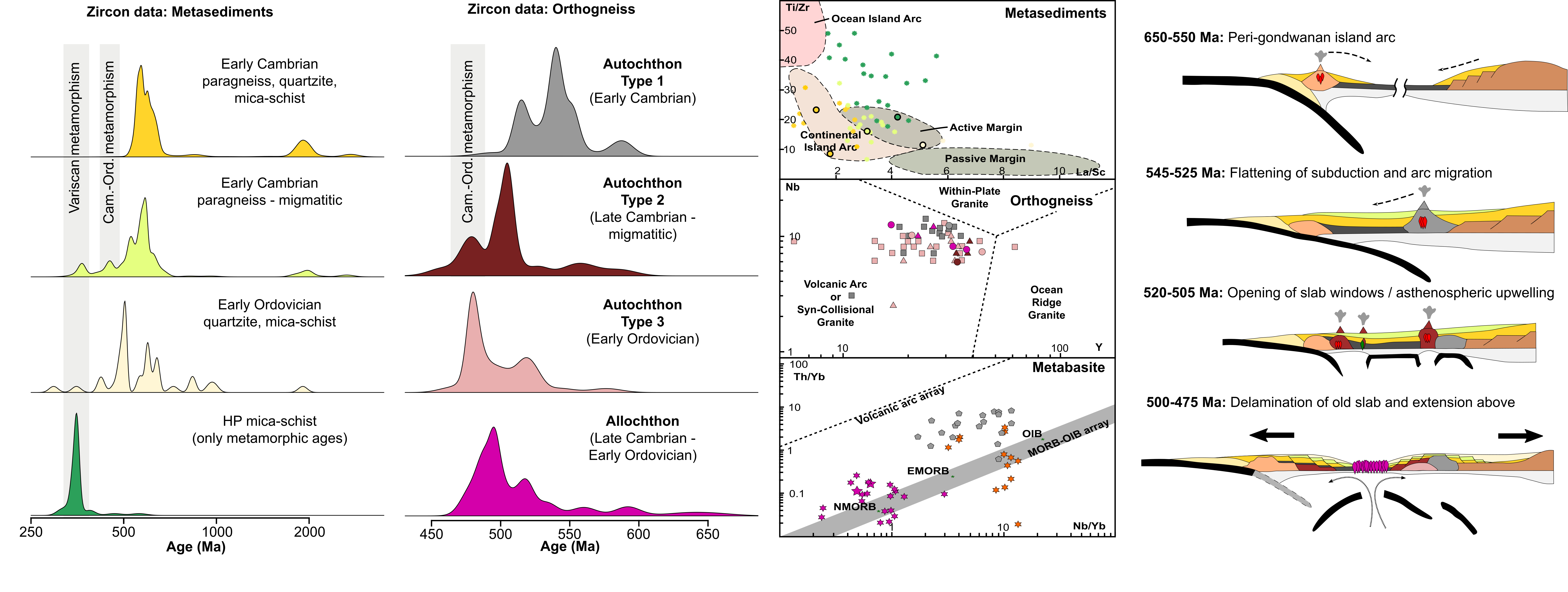Quantitative geochemistry and geochronology
The chemical and isotopic compositions of minerals and whole rock samples provide powerful tools for characterising the geodynamic environment in which rocks were originally emplaced or deposited. We have used these approaches to examine the nature and age of the protolith of relaminated crust, to constrain the depositional age and setting of (meta-)sediments, or to reconstruct pre-collisional architecture in orogenic belts. At a larger-scale, these methods have enabled us to provide geological constraints on paleogeographic reconstructions linked to the amalgamation and dissolution of the Rodinia and Pangea supercontinents.
Zircon U/Pb geochronological and whole-rock geochemical data from high-grade meta-sediments and orthogneiss from the Erzgebirge allow us to reconstruct their pre-orogenic architecture. Sediments were deposited in a foreland basin on the Gondwanan margin during the early Cambrian. The basin underwent extension and high-temperature metamorphism in the late Cambrian and early Ordovician, associated with voluminous magmatic activity. The basin is closed during the Variscan orogeny resulting in high-pressure metamorphism, which overprints much of this older history. [link]

